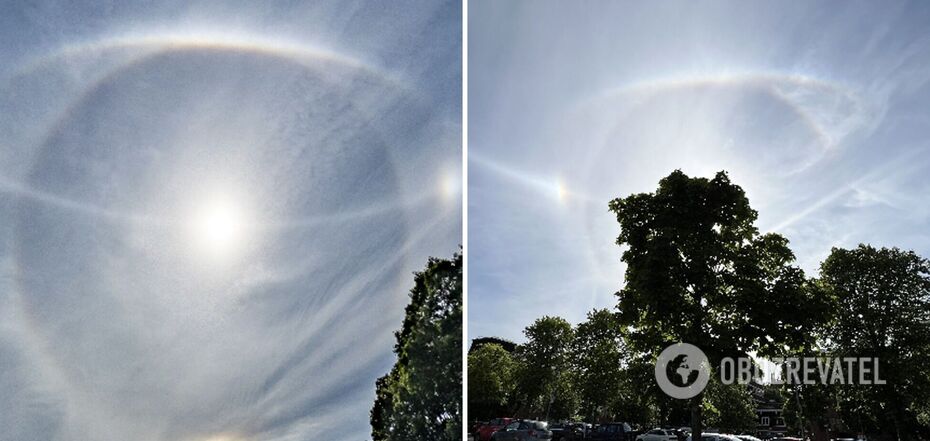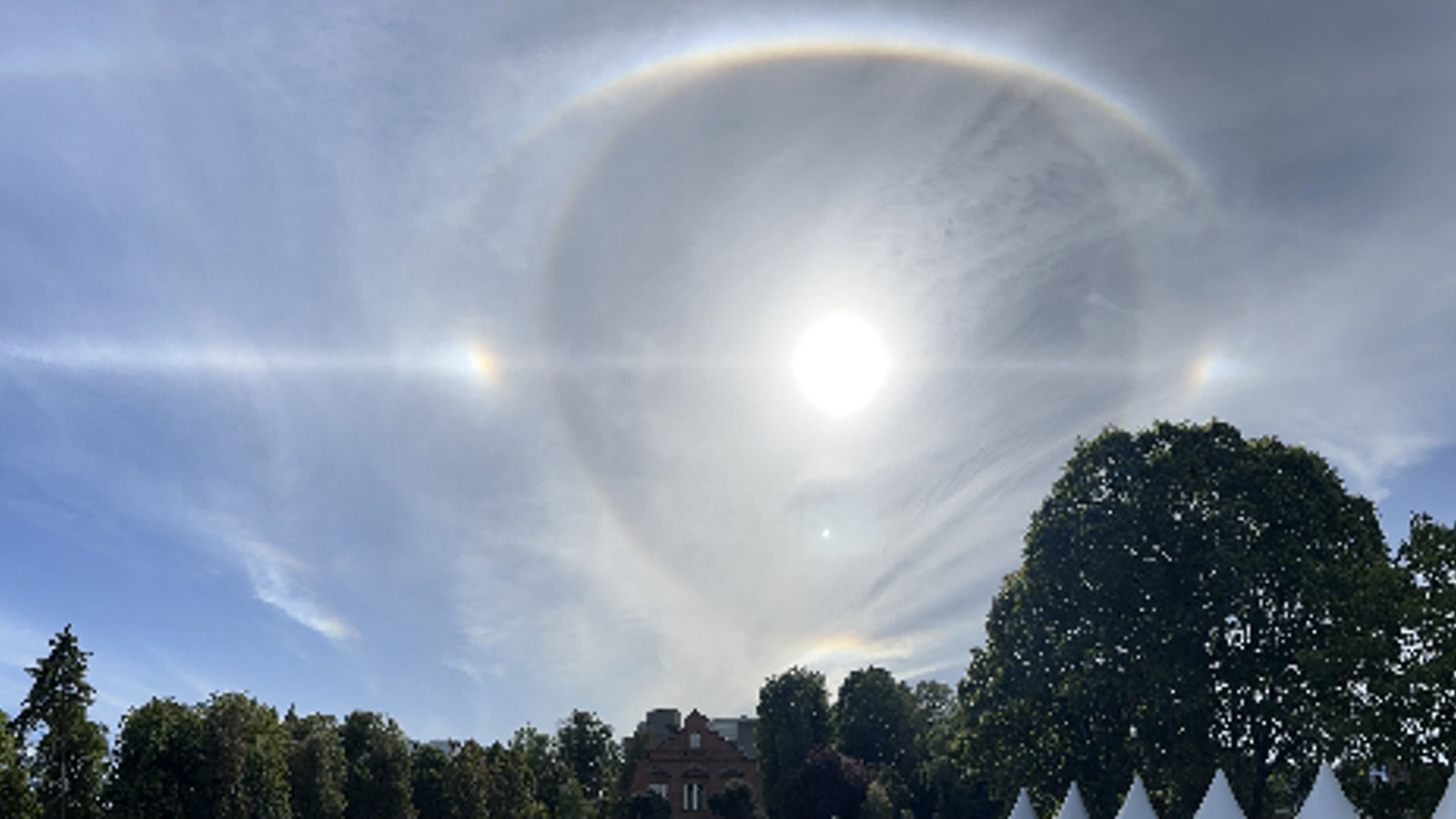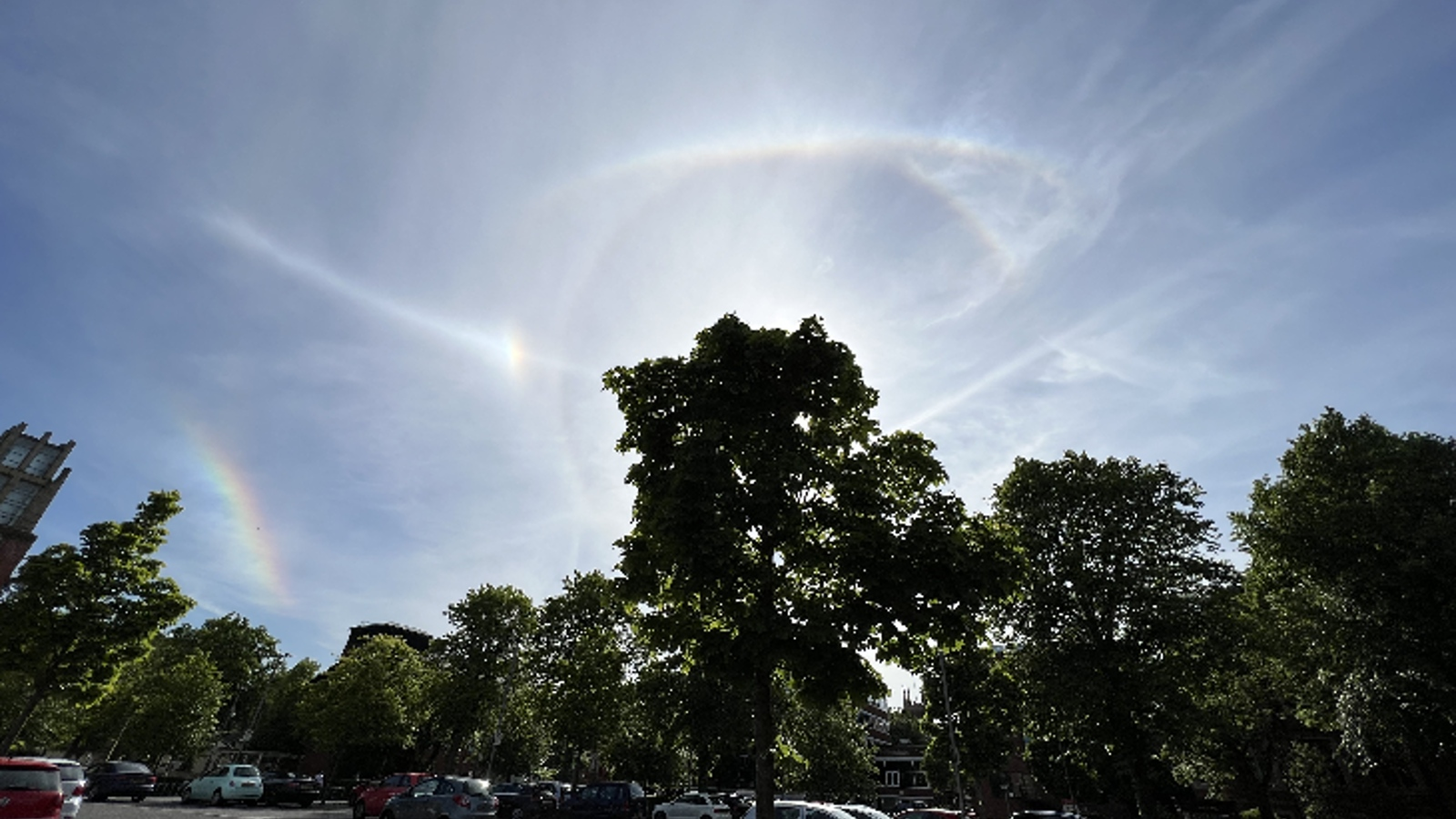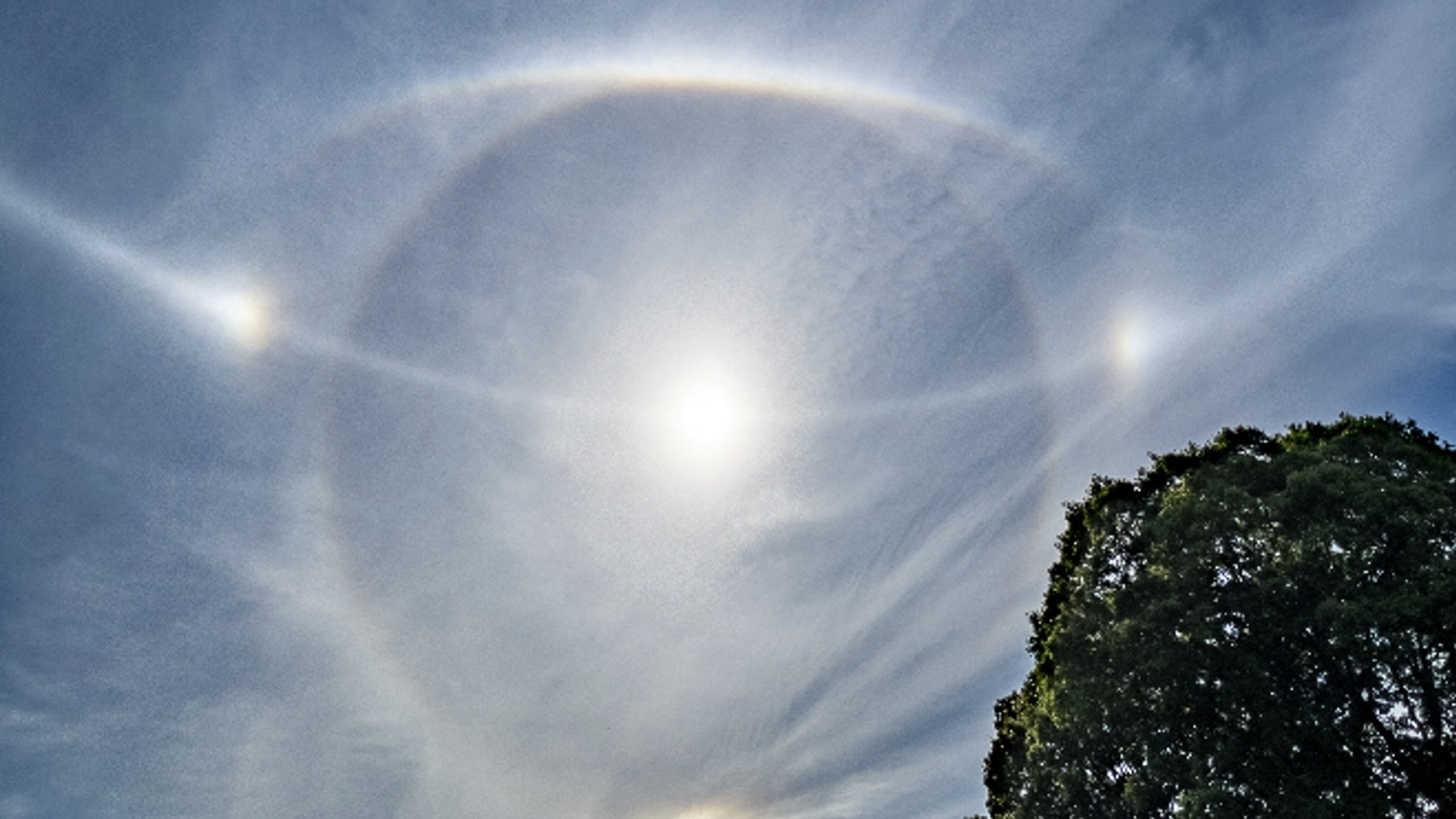Life
An "eye of God" appeared in the sky in Britain: photo of a unique phenomenon
An unusual and very rare phenomenon has recently been observed in the skies over Great Britain. People gave it a poetic name "eye of God", because the phenomenon has the form of a halo, or halo around the sun, which in its shape really resembles a huge eye.
The phenomenon itself and as many as three of its features were recorded by astronomer Alan Fitzsimmons, from Queen's University of Belfast in Northern Ireland. His photos were published by Live Science. ( Please skip to the end of the news to see the photos).
The scientist took the impressive footage on May 28 in the sky above the Belfast Botanical Gardens. According to Fitzsimmons' observations, the phenomenon could be seen for about 30 minutes. It took the form of several glowing arcs and halos of light surrounding the sky.
The scientist explained that such a halo causes light to pass through millions of tiny, perfectly spaced ice crystals in the upper atmosphere that often accompany thin puffy clouds. "If the winds there are very uniform, the hexagonal-shaped crystals align. This allows the sunlight refracted through them to combine, just as light refracts through a prism, creating arcs and circles of sunlight," Fitzsimmons said.
His lens caught at least three different confirmed optical phenomena: a 22-degree halo, a large circle surrounding the sun; a pair of sunbursts, bright dots on each side of the 22-degree halo; and a full pargelike circle, a line that divides the circle in half and also forms a full circle around the entire sky.
According to Spaceweather.com, such a phenomenon was also seen that day in other parts of Northern Ireland, as well as in northern England and Scotland. The portal points out that a full pargelike circle is very rare because it requires at least five internal reflections from millions of individual ice crystals simultaneously catching the sun's rays. According to his data, the images may also include elements of a limited halo and a supralateral arc that form "eyelids" above and below the 22-degree halo.
As the author of the images explained, the pargelike circle is the rarest and most impressive feature he has been able to record. Fitzsimmons admitted that he had only seen it a few times in his life. The other natural phenomena he documented are much more common. But we hardly notice them, because the sun is too dazzling to be freely viewed by anyone.
Scientists tell us that tiny crystals of atmospheric ice can also create a number of other amazing visual phenomena, such as polar stratospheric clouds shining like rainbows in the Arctic, and glowing clouds at night (called silvery clouds), which will be observed in the Earth's Northern Hemisphere in June and July.
Earlier OBOZREVATEL published scientists' explanations of why many people think that the Sun has recently changed color and shape.
Subscribe to OBOZREVATEL channels in Telegram and Viber to keep up with the latest events.






























